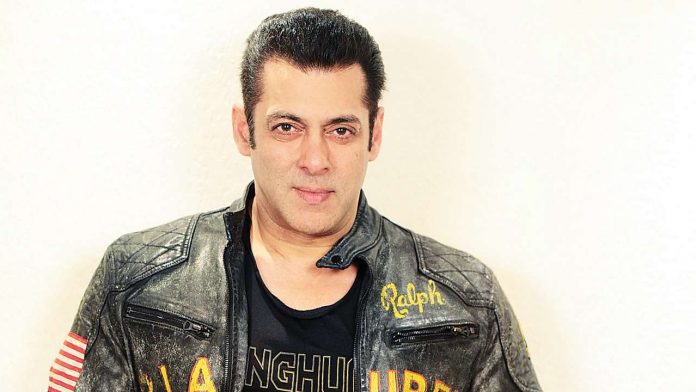By Surendra Bhatia
The Usual Suspects… The Usual Villains… But Who’s The Hero?
Cometh the elections and a section of artistes from films, theatre and other arts line up to sign petitions, against the BJP, urging people not to vote for it. The same usual suspects did it before the 2014 general elections, and they also raised the flag of revolution against the BJP during the many state elections between the two general elections. Signing petitions against the right-wing party for them is as commonplace as it is for the aam aadmi to grab a batata vada on the streets of Bombay. Sometimes, they have been highly innovative, like ushering in the concept of Award Wapsi and creating and igniting the nationwide Intolerance debate. They have occasionally achieved great success; the Intolerance debate spiralled into a whirlpool that swept the BJP away during the Bihar state elections. Now, just before the 2019 general elections, they have resorted to signing petitions, and it would be safe to assume that, being the creative artistes they are, they would soon come up with something more interesting and damaging to help oust the BJP government and bring in… who?
About that, a little later.
The petition makes some damaging statements against the current government and the BJP.
Check this out: “Today, song, dance, laughter is under threat… The BJP, which came to power five years ago with the promise of development, has given free rein to Hindutva goons to indulge in the politics of hate and violence. We appeal to the people of India to help safeguard our syncretic, secular ethos.”
Since they have signed the petition, some have learned to speak the same language. A poet, signatory to the petition, says: “Public sphere has been made toxic. Society is being polarised through the politics of fear. The only way out is through consistent and systematic efforts to restore the country’s syncretic culture.”
As the signatories to the petition are connected with the arts, they would know, they have very cold-bloodedly, and in the harshest possible words, created the perfect villain in the drama they are currently stitching, which is no different from what they did before the 2014 elections and during many subsequent state elections. The BJP and the unnamed PM Narendra Modi have turned society ‘toxic’, created ‘politics of hate and violence and of fear’, and should be voted out.
But, having created the perfect and most venomous villain, and having warned the nation not to elect him, who do they present as the hero, the saviour, the one who would slay the BJP and Narendra Modi electorally, and restore the country’s ‘syncretic’ culture? Mayawati? The one who built elephant statues as chief minister of U.P. and whose political career is built more or less solely on leadership of her large Dalit community? Akhilesh Yadav? The one whose father, Mulayam Singh Yadav, has been in top echelons of power for over four decades because of his unquestioned leadership of Yadavs and Muslims? Laloo Prasad? The one who is currently in jail for corruption and whose progeny is fighting to take over the political reins? Mamata Banerjee? The one who ordered cancellation of Durga immersion because she wanted to prove her ‘syncretic’ credentials by giving Muslims the first right to procession as Muharram fell on the same day? Rahul Gandhi? The one whose presence and performance are often an embarrassment to his most devoted followers?
The problem with the ones who have signed the petition is that they are unable to put up any person or party as hero against the BJP or Narendra Modi’s heavyweight villain. Ideally, they might have liked to promote a communist leader like Sitaram Yechury but the communist parties have lost relevance in Indian politics, and hardly count.
They paint a lopsided picture. An appeal to the people to defeat the BJP and elect who…?
Unsurprisingly, on this issue, there’s deafening silence. They have sketched a powerful villain in the screenplay they want to see unfolding in the coming months and years in India; they appeal to the public to eliminate the villain (electorally, that is) but offer no alternative candidate.
What do they want the public to do? Perhaps, a clue lies in the petition itself. The solution, as the petition puts it, is to vote out hate politics and choose ‘diversity’. What exactly is this ‘diversity’? Mayawati from U.P., Laloo from Bihar, Mamata from Bengal, Kejriwal from Delhi, KCR from Telangana, Naidu from Andhra, Rahul from Amethi, and so on, all of whom are fighting each other electorally? Are the petitioners praying, that like Ravana’s ten heads, these diverse, quarrelling regional leaders would, somehow or the other, merge into one body, post elections? For the kind of artistic pretensions they boast of, the petitioners seem to be less than juveniles in politics… and also in arts, perhaps. A powerful villain needs a strong hero; even a charismatic and clean underdog would do. The petitioners are unable to prop up anybody and have opted for ‘diversity’, such as it may be.
Following on this petition, rather predictably, BJP supporters have launched a petition of their own, signed by some more hundreds of so-called artistes, or people from the field of arts, asking the people to vote for Narendra Modi and bring him back as PM. So, there! One set of fools ranged against another. Would either set make any difference to the electorate’s choice?
It would be presumptuous and highly arrogant if any of the petitioners on either side of the appeal to the electorate believes that voters would be influenced by it. If Naseeruddin Shah thinks that the voters look up to him to make their choice, he would have been able to promote his films to super-success; similarly, Vivek Oberoi, if he could really influence the masses, would not have been in wilderness for so many years. Frankly, for all the influence they may have on the electorate, the petitions are not worth the paper they are typed on. Yes, each petition is lauded by the committed voter of either side but that is like preaching to the converted; no ‘undecided’ will be swayed by these petitions. Besides, signatories of both petitions are seen as biased by the electorate, unable to drum up credibility because their villains are all-black; that just doesn’t wash with the electorate.
Both groups are wasting time. If the purpose is to prove to their friends and families that they have the courage to take a political stand, they have succeeded.
How Many Releases A Week Can India Handle?
When the release date of a Salman Khan film is declared, all other film production companies with completed movies scatter like ants confronted with a shot of Hit. Not only do producers not want their release to clash with a Salman starrer (or, for that matter, film of any male A-lister), they stay away from even the following Friday; there is a definite apprehension that if Salman’s film takes off like a Mangalyaan, it would corner all the eyeballs the next Friday too.
So, most producers keep their films off cinemas when a superstar’s film is scheduled to release. Producers with investment of over Rs. 50 crore in a film don’t release them during the inauspicious or difficult times either – like pre-Diwali week, during Ramzan, during school and college exams, on the year’s first Friday, etc. And then, when three or more films release the same Friday, there’s panic in Bollywood even if these are small films: the theory is that they would cut into each other’s business, leaving not enough for anyone.
Deciding on the release date of a film is an art in itself. It would not be surprising if producers not only got into a huddle with astrologers and numerologists but also held consultations with Bollywood veterans just to zero in on the release week. The days leading to deciding the release date are, supposedly, as traumatic as the ones going into actual release. Too many factors to consider, and choices are limited, and to get it wrong is akin to committing harakiri.
Yet, India is the country with the world’s highest production of films. If all producers are as choosy about release dates as the ones in Bollywood and want their films to open in near-perfect conditions, they would end up waiting for months, if not years. The fact is that they don’t. So, like Yudhishthir, most producers just roll the dice with a prayer on their lips that the Gods are listening to them – sometimes, they hit the jackpot; most times, like Yudhishthir, they lose everything.
The simple fact of releasing a film in India is that competition in cinemas is never far away. Salman Khan can dream of having a solo Bollywood release, but even he faces competition in most of the circuits. It can’t be helped. Because, and this should surely find its way into the Guinness Book of World Records, there’s no Friday in India when at least 10-15 new films don’t release. Yes, you read it right. There are many weeks in the year when as many as 50 new films release on the same Friday; having a Friday with 25-30 new releases is commonplace, it happens every third week. For instance, on January 11, the Friday when Uri – The Surgical Strike and The Accidental Prime Minister released, six other Hindi films too opened (Evening Shadows, 706, Battalion 609, Khamiyaza – Journey Of A Common Man, Falsafa and Pagal Kar Diya Toone…); and also 26 other films – Bengali – 2, Gujarati – 3, Marathi – 6, Malayalam – 3, Tamil – 2, Telugu – 4, Kannada – 2, Oriya – 2, Punjabi – 1, and one dubbed film, adding up to 34 new releases on the same Friday! This is not chaos, this is India!
It is generally known and accepted that India is a diverse country but people don’t realise the extent to which diversity is in-built in India. They also don’t know or realise that every 15-20 miles, the landscape may remain the same but there is a subtle change in the cuisine, culture and dialect of the people. Marathi alone has 42 dialects, and it’s not simple for even a Marathi-educated person to understand all of them with ease.
In a way, this is reflected in the diversity in Indian cinema. Films in India are made in over 30 different languages, though not necessarily every year. But the major languages, many of which are mentioned above, have their own film industries, alive, kicking and thriving. And all of those films, naturally, need to be released. That is the reason why when only about 10-15 new films release in any particular week, it is considered a slow Friday.
It is, therefore, all the more surprising that cinema screens in India are not even 10,000, when the actual need for them is 20,000 and more. If more cinemas would come up, and especially in regions which are currently grossly underserved, regional film industries would bloom. It is a given that when Salman’s film releases, the Marathi and Gujarati and Punjabi films opening the same Friday show retarded collections. Additionally, the screens made available for these regional films, in various territories, would be far fewer in number than when they have to fight it out with, say, a Tusshar Kapoor starrer. If India would only witness an exponential spurt in cinema screens, the regional film industries would begin to see much greater prosperity than they currently enjoy. Bollywood collections boomed after the advent of multiplexes. Regional films’ box-office collections too would grow substantially if they are able to corner more screens at release time.
Indian governments, union and state, should realise that the film industries could fuel the engine of growth in the country. Even if they make the climate more conducive to build cinemas, a Bhojpuri film could one day challenge the collections of a Salman film. Miracles do happen, and India is just the country where they do.































